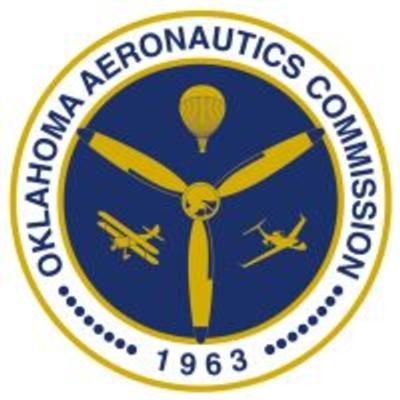Oklahoma Takes A Proactive Stance On Promoting Aviation And Aerospace In The State
Federal, state and city officials will soon celebrate the completion of a runway extension at Enid Woodring Regional Airport, giving pilots training at Vance Air Force Base an alternative airport nearby on which they can land their various jet trainers. This development, undoubtedly, will prove significant in any future base realignment and closure rounds.

The Enid runway extension to 8,000 feet is just one of many airport projects statewide included in a record $10 million the Oklahoma Aeronautics Commission has invested in airport infrastructure over the past year.
“This amount of capital expenditures is unprecedented for us. Never before has the Commission invested so much in one year – including $2.5 million toward the Enid runway extension – to help our public airports meet the needs of commerce and communities across the state. I am extremely proud of how our agency has stepped up to help communities improve the facilities and infrastructure at their airports,” said Director of Aeronautics Vic Bird.
Bird said the Commission typically spends $3-4 million a year on airport improvements. He credited a variety of factors for the record capital investment over the past fiscal year, including a revamped grant administration system, better overall weather favoring construction, intertwined federal funding that was not interrupted as in years past and less regulatory, construction and engineering issues.
Other notable airport projects receiving funding over the course of the year included new terminal construction at both Ada and Grove municipal airports. The Commission provided $500,000 each to those projects. The Commission also contributed $1.4 million to install new approach lighting systems at four airports in the state. In addition, the Commission provided $400,000 toward a runway extension project in Fairview.
The vast majority of state funding for airport improvement projects comes directly from aircraft owners and pilots through aircraft excise taxes, Bird explained. The Commission also receives a small amount of revenue from aircraft registration fees and aviation fuel taxes. Revenue can vary greatly based on the number of aircraft bought and sold during any given year. The Commission does not receive general appropriations from the Legislature.
“Since becoming a fully independent agency in 2002, we have received about $60 million from these revenue sources for the purpose of improving and maintaining the Oklahoma Airport System. Out of that $60 million, approximately $50 million has been reinvested back into airport infrastructure across the state, including more than $25 million just in last five years. You’re talking about an 83 percent return on investment there. I will put that up against any other agency or program,” Bird said.
Bird said the Legislature’s willingness to dedicate more funding to airport needs has also enabled the Commission to leverage those dollars into $133 million in federal funds over the same period.
“Fifteen years ago, federal funding for Oklahoma airports was practically non-existent. But thanks to the Legislature’s wisdom in making the Commission a separate agency and providing us with a dedicated funding stream, we were able to develop a CIP and prove to the FAA that we were serious about improving our state’s air transportation system. And now the FAA uses us as a model when talking to other states,” Bird said.
Bird was quick to point out that the Commission’s successes don’t just stop at airport funding. The Commission has also championed several legislative bills over the years designed to protect the flying public and grow Oklahoma’s aviation and aerospace industry. Arguably, the most far-reaching was a 2008 bill that provided tax credits to new engineers going to work for an Oklahoma aerospace company as well as the companies that hired those engineers.
“Without that bill in place, I am not so sure Boeing would have made the decision to transfer more than 2,000 jobs here from Long Beach, Wichita, and Seattle. The bill has certainly done what it was designed to do and that’s address the engineer shortage within Oklahoma’s aerospace and defense industry, one of our state’s top economic engines and biggest employers,” Bird said.
Other legislative successes include a 2010 bill that limits the construction of tall structures near public airports and military airfields; a 2014 bill that requires the marking of wind evaluation towers up to 200 feet in height; and a 2006 bill that created the Center for Aerospace and Defense Supplier Quality (CADSQ) program. CADSQ provides expert advice and counsel at no cost to companies doing business in Oklahoma who want to compete for government contracts with Tinker Air Force Base and its prime contractors such as Boeing and Pratt and Whitney.
Since its inception, CADSQ has helped 34 companies win 520 contracts totaling almost $58 million. In addition, the program has generated $237 million in economic activity across the state and created or retained over 2,000 jobs, while providing a $7.7 million return to Oklahoma taxpayers.
The Commission also led the effort in 2013 to keep all six of Oklahoma’s contract air traffic control towers open during a year of FAA funding cuts and furloughs due to sequestration.
 Senator Pushes FAA to Accelerate Rocket Launch Licensing
Senator Pushes FAA to Accelerate Rocket Launch Licensing Classic Aero-TV: RJ Gritter - Part of Aviations Bright New Future
Classic Aero-TV: RJ Gritter - Part of Aviations Bright New Future Aero-FAQ: Dave Juwel's Aviation Marketing Stories -- ITBOA BNITBOB
Aero-FAQ: Dave Juwel's Aviation Marketing Stories -- ITBOA BNITBOB ANN's Daily Aero-Linx (10.27.24)
ANN's Daily Aero-Linx (10.27.24) ANN's Daily Aero-Term (10.27.24): Clearance Void If Not Off By (Time)
ANN's Daily Aero-Term (10.27.24): Clearance Void If Not Off By (Time)



